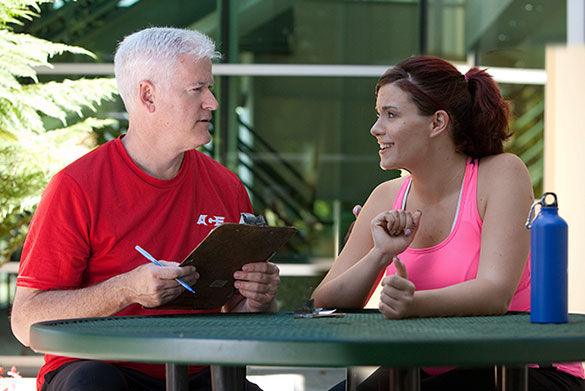
Of all of the skills needed to help clients effectively “talk themselves into change,” none is more important than the reflection. A reflection is a way of “hypothesis testing” what the client means by a given statement. If you have a strong, trusting relationship with the client, it is O.K. if you guess wrong. The client will let you know you are wrong, and still elaborate.
Reflections are generally offered in the form of a statement rather than a question. They may start with phrases like, “So you feel…,” or “It sounds like you…,” or “Kind of like…,” or “You’re wondering if…,” or “It’s as though….” Of course, reflections do not need to start with these phrases, and are often more powerful when these stems are removed. In those cases, simply start with a “you” statement. And keep in mind that reflections generally are no longer than the statement they follow.
Reflections come in many forms. They can be as simple as repeating what someone has just said, rephrasing what they said, paraphrasing the gist of what was said, or reflecting back what the client is feeling. The reflection of feeling, which is referred to as a complex reflection, is the most powerful form of this technique. A complex reflection involves making a “best guess” at the underlying meaning of what was said.
Consider this example: Brianna is a single mom with two teenaged kids. She recently found out that she has metabolic syndrome, including a very low HDL cholesterol level (the healthy cholesterol). She and her doctor worked out a deal that she will try to change her diet and exercise for six months and then reassess whether adding a medication is necessary. Part of her plan was to hire a personal trainer to help her get in shape and, hopefully, help to increase her HDL cholesterol. Unfortunately, she has canceled two of the last three sessions with her trainer.
The trainer assumes that Brianna has lost motivation to change. However, he really would like to help her achieve her goals. He decides to give her a call to see what’s going on.
Trainer: “Brianna, how are you doing? I’ve missed you at the gym.”
Brianna: “Hi. Oh, well, thanks for calling. I’m really sorry. I’ve been so busy with the kids, driving them all around and then having to put food on the table, and I guess I just sort of forgot.”
Trainer: “[It sounds like] Life is hectic.” This is an example of simple reflection, or rephrasing what the client has already said. At first, starting reflections with phrases such as “It sounds like” may feel more natural, but eventually removing these stems help to make the reflections more powerful.
Brianna: “It really is. I know that I need to get to the gym, though. I’m sorry that I haven’t been there.”
Trainer: “You feel torn because you want to keep your commitment to me and to your doctor, and you really want to lower your cholesterol, but you’re not quite sure how to make it all fit in your daily life.” This is an example of complex reflection, or taking a guess at how the client is feeling.
Brianna: “Yes. That is exactly it. I want to be active. I need to.”
Trainer: “It’s really important to you to be more active.” This is an example of simple reflection, or a restatement of what the client has said.
Brianna: “It is.”
Trainer: “Would it be ok if we take a few minutes and try to troubleshoot how you might be able to achieve your goals and fit exercise in, keeping in mind the demands on your time and attention?” By asking permission to discuss further, the trainer is respecting Brianna’s autonomy and engaging her in the process of coming up with solutions.

Brianna: “Yes, please.”
Trainer: “What do you think might make it easier to incorporate exercise into your day?” By asking an open-ended question, the trainer helps the client come up with her own solutions. This makes it more likely that the client will follow whatever plan is agreed upon.
From here, the client and trainer are able to go on and adapt the plan.
The use of reflections helps to prompt the client to better describe what is underlying the canceled appointments. It also helps to show that the trainer is listening and cares about the client’s success. The complex reflection is even more likely to help the client identify and describe what is actually preventing her from following through on a desire to show up for the training sessions. Then, mostly through the use of reflections, the trainer can help the client come up with potential solutions and a plan to continue to engage in activity, but possibly in a very different way.
The use of reflections is a very powerful communication technique that helps to relieve the burden of “having the solution” or giving unsolicited advice that will not be followed. Instead it prompts clients to assess their beliefs and behaviors and come up with their own solutions.





 by
by 



